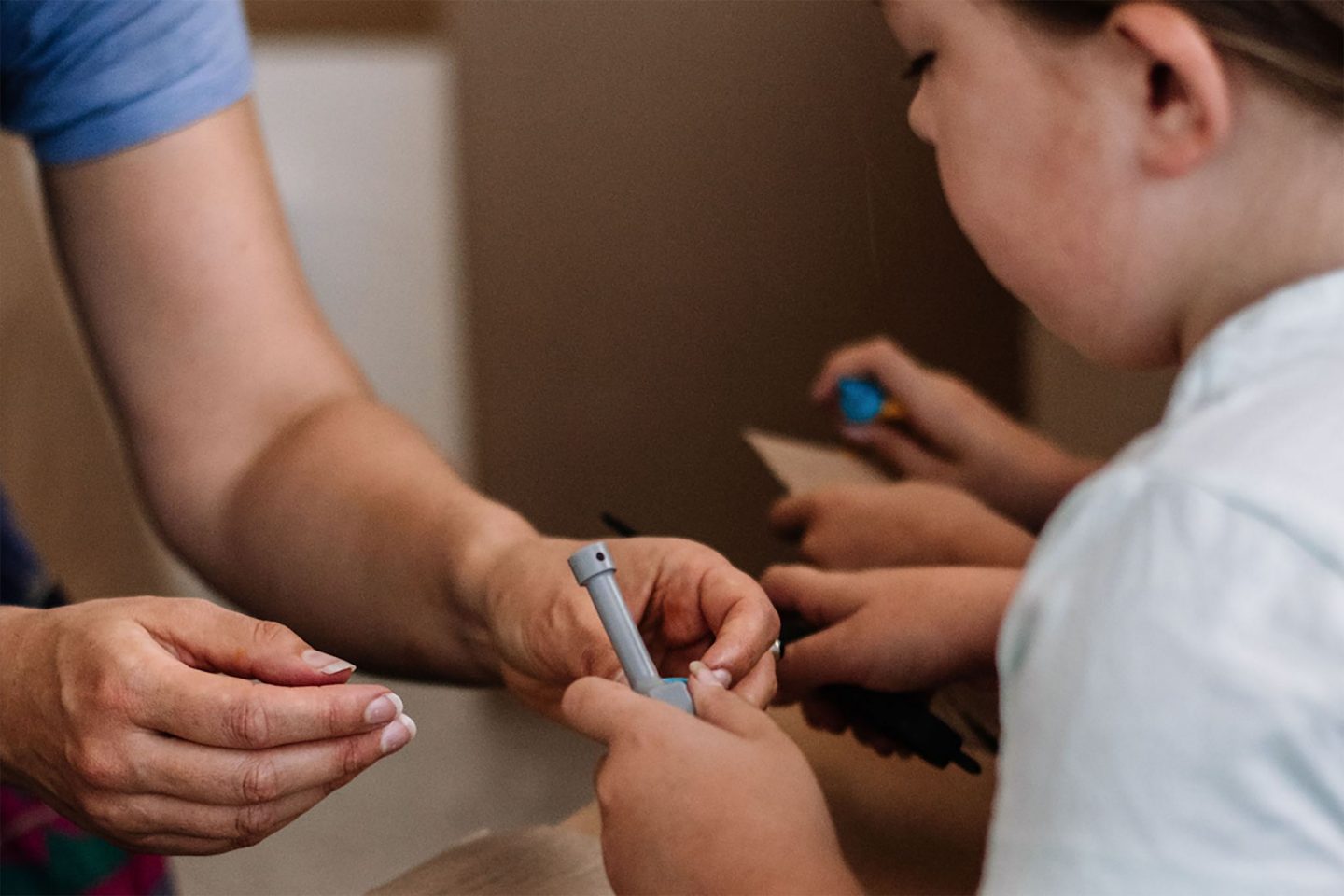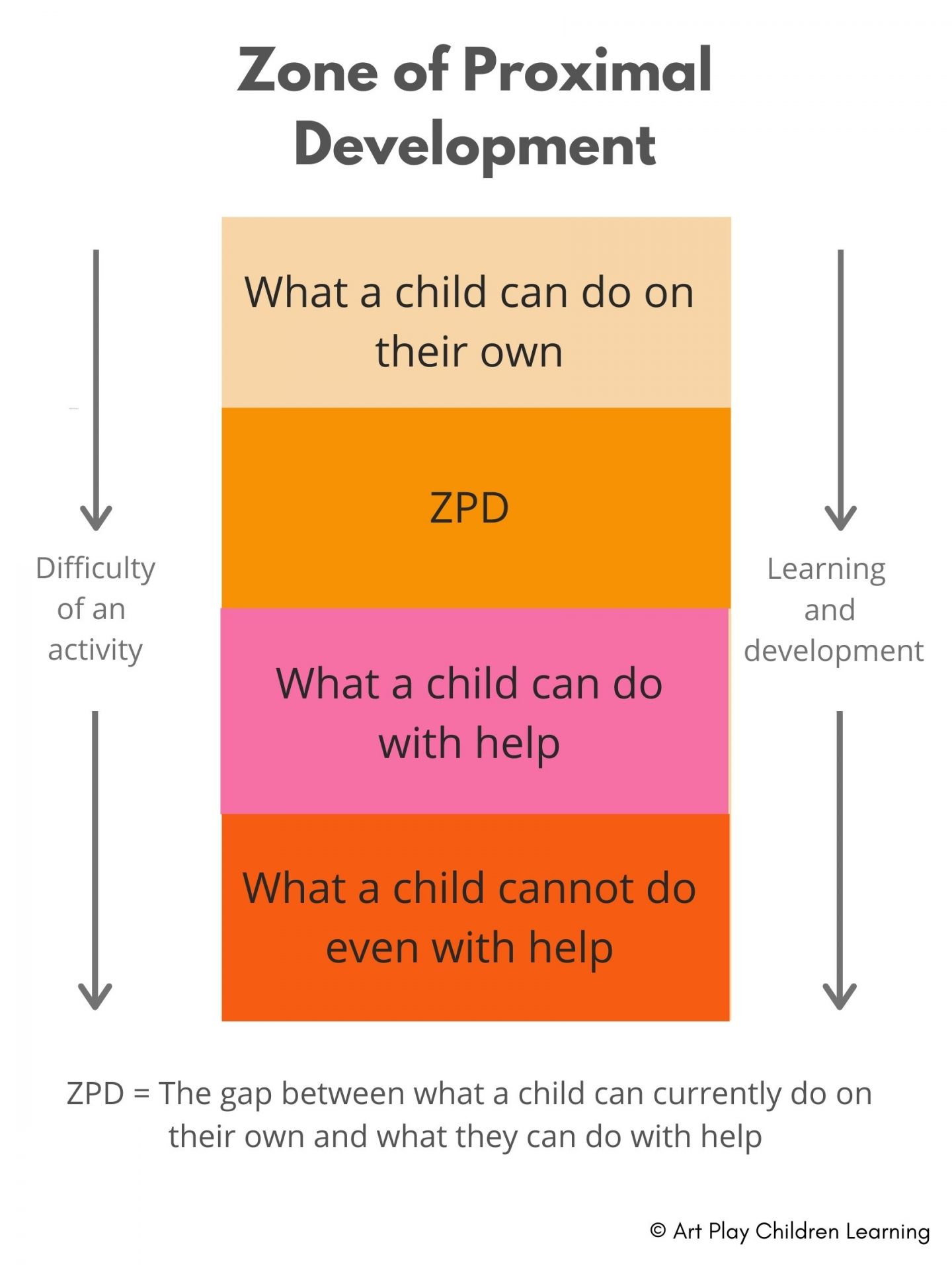Picture this: A 5-year-old boy has got a new pair of school shoes and is learning how to put them on. He can loosen the laces, slip his foot inside, but does not know how to tie the laces.
The child and his father watch a YouTube clip of how to do the shoelaces up. They then have a go at doing the activity together where the father instructs the child on how to weave and tighten the laces step-by-step. It is a success. Each day that follows, the father reduces the intensity of instruction on how to tie the laces until the child can do it independently. The father has scaffolded his child’s learning through the Zone of Proximal Development.

What is scaffolding?
Scaffolding is an education term that refers to the guidance and skills a more experienced person, such as a parent, can give to a less experienced person, such as a young child. This guidance helps the less experienced individual to undertake a task that is beyond their current abilities.
The intensity of ‘scaffolding’ can then be withdrawn as a child becomes more competent in undertaking the task by themselves. The level of scaffolding, therefore, needs to be constantly adjusted in response to a learner’s abilities.
What is the Zone of Proximal Development (ZPD)?
One of the most difficult parts of scaffolding children’s learning is finding where their current level of knowledge is so that new skills can be introduced. Russian child psychology, Lev Vygotsky (1986-1934) called the gap between what a child can do on their own and what they can do with help the ‘Zone of Proximal Development.’
Vygotsky believed that the purpose of teaching was to support the development of skills and knowledge. Scaffolding plays an important part in learning by moving a child’s current level of knowledge to a more advanced level.
Parents and teachers can encourage the scaffolding of learning by using strategies that support children in eventually being able to undertake an activity independently. As a child begins to master new skills within the ZPD, parents can adjust their intensity of scaffolding so that children can continue to advance their learning.

Examples of scaffolding children’s learning through the ZPD:
Scaffolding can be done in many different ways including:
- Demonstrating a new skill or technique. e.g. ‘this is how you hold a pen so you can write you name.’
- Describing the meaning of a concept. e.g. ‘this is what a 2D shape is
- Giving feedback, ‘e.g. if you press the paint stamp harder, you will be a more vibrant color.’
- Asking questions that give different alternatives. e.g. ‘I know that you love drawing bugs but would you like me to show you how to draw a lizard?‘
Step-by-step guide to scaffolding
The following steps can be used to scaffold children’s learning at home:
- OBSERVE. Watch what children are doing and where their current level of understanding and interest are at. For example, if you are making a cardboard sculpture, observe what skills children already know such as how to use sticky tape, a stapler, or glue.
- ASK. Questions can be a great way to get further information about a child’s level of understanding. This could be an open-ended question such as “can you tell me what you are making?” or a closed question such as “would you like me to show you how to use scissors with the cardboard?”
- DEMONSTRATE. Introduce a new skill, tool, or concept to extend children’s learning. This could include how to use scissors, how to bend the cardboard, or introduce a new vocabulary word such as space, height, or gravity. You can apply this new knowledge together while making the cardboard sculpture.
- STAND BACK. Give children the opportunity to then apply the new knowledge independently. Perhaps they won’t want to use the new skill, tool, or concept at all and that’s okay. Allowing children to make their own decisions is important taking ownership of learning.
- REPEAT. If the new information you have introduced is too advanced or easy for your child, you can always adjust the intensity of scaffolding and repeat the process. ⠀
Does anyone else have tips on how to best scaffold children’s learning?
Have a good week!
Louisa x
Related Posts
Vygotsky on collective creativity
Asking questions to encourage children’s creativity! A post for parents